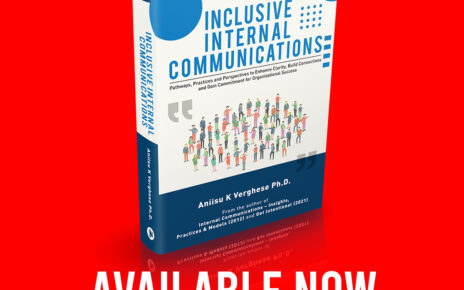Internal communications play a pivotal role in determining the most important person within an organization. This identification is crucial because it helps streamline the flow of information by clarifying why, who, when, and what information should be shared and discussed. The key individual varies depending on the organization’s type, maturity, and whether it is process-driven or relationship-led. Understanding this can greatly enhance organizational efficiency and morale.
The Value of Internal Communications
Effective internal communications create a transparent environment where employees are informed, engaged, and aligned with the organization’s goals. This transparency is essential for identifying key influencers within the organization. If you channel your communication through the wrong audience, you can fail miserably. These influencers are not necessarily the top executives but can be anyone with significant tacit knowledge and social capital.
The Influence of Organizational Maturity and Structure
- Mature Organizations: In mature, process-driven organizations, the most important person may often be someone in a strategic role, such as a senior executive or department head, whose decisions impact long-term planning and stability.
- Growing Organizations: In contrast, in younger, relationship-driven organizations, the key person might be a frontline employee or a middle manager who acts as a bridge between the staff and leadership, fostering a culture of trust and collaboration.
Research Insights on Employee Treatment and Organizational Priorities
A study by Columbia Business School highlights a significant gap between how organizations treat their employees compared to their customers. The research, which analyzed S&P 500 companies’ earnings calls, found that the term “customer” was mentioned almost five times more often than “employee”. This disparity indicates a potential “say-do” gap where companies claim employees are their most valued assets, but their actions suggest otherwise. This gap can erode trust and affect overall organizational health.
Additionally, research by Gallup shows that organizations with high employee engagement have 21% higher profitability. This underscores the importance of treating employees as key stakeholders. Furthermore, a study by McKinsey & Company found that companies in the top quartile for employee experience saw twice the innovation and customer satisfaction as those in the bottom quartile. These findings emphasize the importance of identifying and nurturing internal influencers to drive organizational success.
Defining Importance in an Organization
The concept of the “most important person” in an organization often brings to mind the CEO, the customer, or frontline workers. However, importance should be defined by an individual’s influence within the organization. Those who possess deep tacit knowledge and have the social capital to navigate workplace complexities are invaluable. Their ability to influence others and drive change from within makes them critical to the organization’s success.
The Role of Influencers
Influencers within an organization are those who can:
- Drive Change: They facilitate innovation and adaptability by understanding and communicating the need for change effectively.
- Foster Engagement: They build strong relationships, promoting a positive work culture and higher employee engagement.
- Bridge Gaps: They act as intermediaries between different levels of the organization, ensuring that information flows smoothly and efficiently.
Importance of Clear Communication
Dissecting what “importance” means within the context of an organization requires clear and strategic internal communications. This involves:
- Clarifying Roles and Expectations: Clearly defining roles helps in understanding who holds the most influence.
- Regular Feedback and Dialogue: Continuous feedback mechanisms ensure that influencers are recognized and their insights are valued.
- Empowering Employees: Empowering employees at all levels to share their knowledge and influence decisions fosters a culture where true influencers are identified and leveraged.
Internal communication is essential in identifying the most important person in an organization. By focusing on individuals with significant tacit knowledge and social capital, organizations can ensure that information is shared effectively and efficiently. This approach not only enhances operational efficiency but also strengthens trust and engagement among employees. As organizations strive to treat their employees with the same respect and importance as their customers, recognizing and empowering key influencers becomes crucial to their success.


